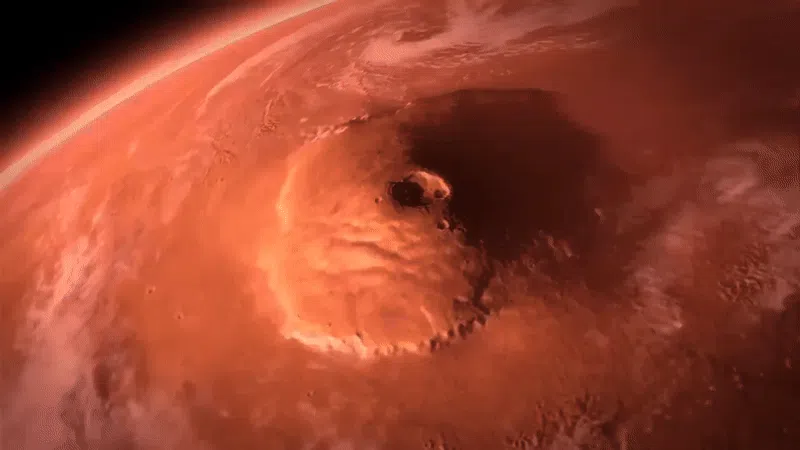Mars' Olympus Mons: The Solar System's Colossal Mountain
A Gentle Giant: Unpacking the Scale of Olympus Mons
Mars, our intriguing planetary neighbor, holds a geological marvel that dwarfs anything found on Earth: Olympus Mons. Standing at an astounding 22.5 kilometers (approximately 14 miles) tall, this shield volcano isn't just the highest mountain on Mars; it's the tallest known planetary mountain in our entire solar system. To put its sheer scale into perspective, Olympus Mons is nearly three times taller than Earth's Mount Everest, and its base spans an area comparable to the size of France!

Olympus Mons, a colossal shield volcano on Mars.
Ascending to the Edge of Space
One of the most mind-bending aspects of Olympus Mons is its relationship with Mars' incredibly thin atmosphere. While Earth's atmosphere gradually thins with altitude, Mars' is barely 1% the density of ours at sea level. This means that the summit of Olympus Mons effectively reaches into a region where the atmosphere is vanishingly thin, almost "beyond the atmosphere." This isn't because Mars' atmosphere is short; in fact, due to the planet's lower mass, its atmosphere actually thins out slower than Earth's, meaning it extends proportionally higher up into space.
The Illusion of a Climb: A Mountain Unlike Any Other
Despite its staggering height, climbing Olympus Mons would be an experience far removed from scaling Everest. Due to its immense width and extremely gradual slopes, the incline is so gentle that it would feel more like walking up a vast, imperceptible bump. You wouldn't be able to see the summit from the base due to the curvature of the planet, making the ascent a gradual realization of increasing altitude rather than a visual climb. This extreme low incline also explains why many visual renderings of Olympus Mons often feature exaggerated vertical scales – the true slope is so subtle it's difficult to represent dramatically.
Future Footprints on the Martian Giant?
The thought of human exploration of Olympus Mons sparks the imagination. While the atmospheric conditions and the sheer scale present formidable challenges, the idea of a future generation of explorers setting foot on this colossal Martian landmark remains a captivating prospect. Whether it's for scientific study, resource extraction, or simply the spirit of adventure, Olympus Mons stands as a testament to the dramatic geological forces at play across our solar system, waiting for us to uncover its secrets.




